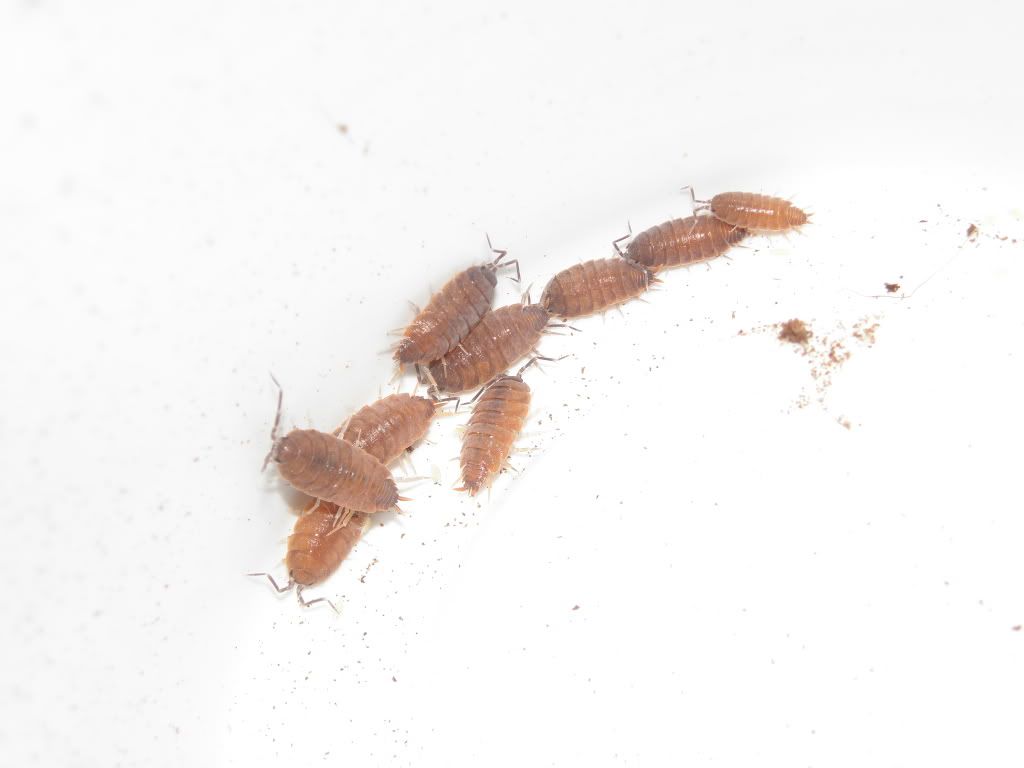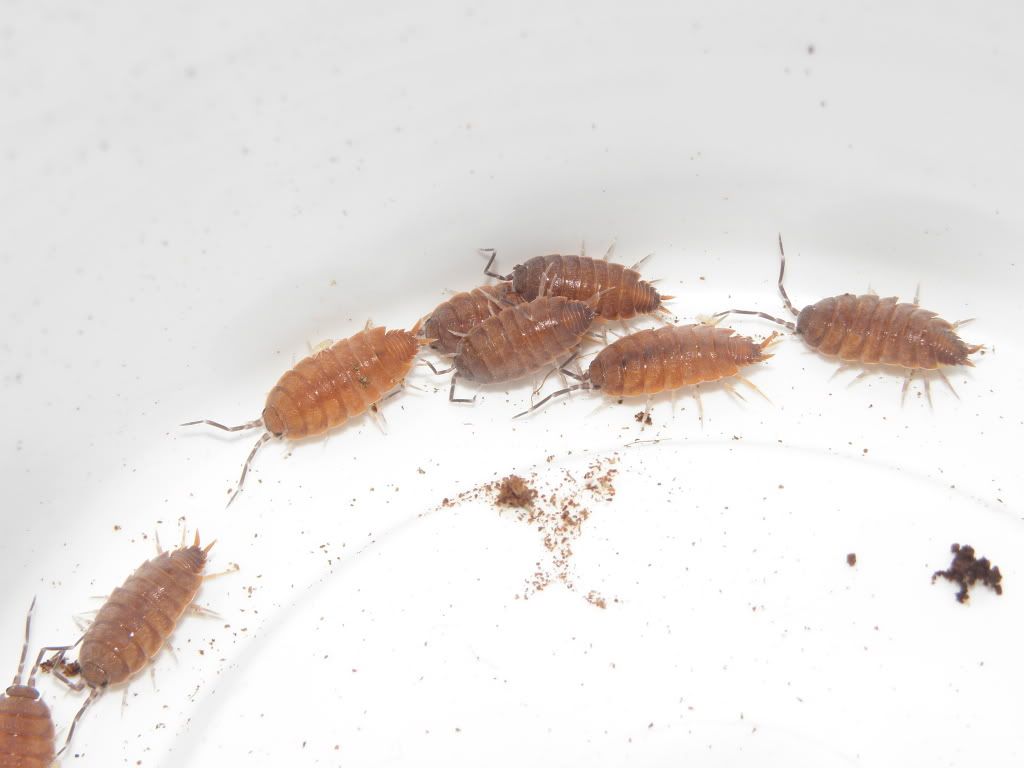- Joined
- Aug 28, 2011
- Messages
- 257
Hello, I began an isopod culture about 4-5 months ago, and I've found something intriguing. Out of the approx. 200-300 individuals, about ten percent show signs of the orange color morph. Most interestingly of all, the beginning culture was 100% wild caught, and this is only the first generation to be born in captivity. It was my understanding that the orange morph was fairly rare, and I would have assumed that a specific morph like that would be pretty localized; however, since I doubt the original oranges we have in the hobby were collected in west-central Alabama, this makes me think that the morph might be pretty widespread. Has anyone else found the orange morph in their WC isopods? Also, does anyone know specifically where the orange stock in culture began?
Here are some pics of mine:


(note: these are only the individuals that I was able to find by flipping cover on the surface of my 5-inch deep substrate 10-gallon terrarium; I believe there to be many more in there)
Here are some pics of mine:


(note: these are only the individuals that I was able to find by flipping cover on the surface of my 5-inch deep substrate 10-gallon terrarium; I believe there to be many more in there)
